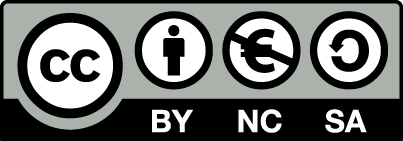| Name | Speichervolumen | Metadaten | Upload | Aktion |
|---|
Alternativer Identifier:
(KITopen-DOI) 10.5445/IR/1000093534
Ersteller/in:
Kiseleva, Olga [Kiseleva, Olga]
Adler, Bianca [Adler, Bianca]
Kalthoff, Norbert [Kalthoff, Norbert]
Kohler, Martin [Kohler, Martin]
Wieser, Andreas [Wieser, Andreas]
Wittkamp, Niklas [Wittkamp, Niklas]
Beitragende:
-
Titel:
Data set of meteorological observations (wind, temperature, humidity) collected from a microwave radiometer and lidar measurements during four intensive observations periods in 2017 and 2018 in Stuttgart, Germany, under the BMBF Programme ‘Urban Climate Under Change’ [UC]2).
Weitere Titel:
-
Beschreibung:
(Abstract)
Die meteorologischen Daten zu den Temperatur-, Feuchte- und Windfeldern wurden während vier Messkampagnen in Stuttgart im Sommer 2017, Winter 2017, Sommer 2018 und Winter 2018 erhoben. Doppler Lidarsysteme und ein Mikrowellenradiometer wurden zur Erfassung und zur Analyse der horizontalen Struktur d...
(Abstract)
This dataset of meteorological observations (temperature, humidity, wind) was collected during four field campaigns in Stuttgart, Germany, in summer 2017, winter 2017, summer 2018, and winter 2018. Doppler lidars and a microwave radiometer were deployed to investigate horizontal structures of intra-...
(Technical Remarks)
### **DATA SET DESCRIPTION**
### **1. Spatial coverage**
The measuring data were collected during intensive observation periods (IOP) in Stuttgart, Germany, under the BMBF Programme ‘Urban Climate Under Change’ [UC]2.
### **2. Temporal coverage**
01.02.2017 - 31.08.2018
### **3. Data file structure ...
Schlagworte:
eastward wind
northward wind
vertical velocity
wind profiles
lidar
Stuttgart
KITcube
atmosphere cloud liquid water content
atmosphere mass content of water vapor
infrared radiometer brightness temperature
air pressure
microwave radiometer HATPRO
absolute humidity profile
air temperature profile
virtual tower
dual-Doppler lidar technique
northward wind
vertical velocity
wind profiles
lidar
Stuttgart
KITcube
atmosphere cloud liquid water content
atmosphere mass content of water vapor
infrared radiometer brightness temperature
air pressure
microwave radiometer HATPRO
absolute humidity profile
air temperature profile
virtual tower
dual-Doppler lidar technique
Sprache:
-
Herausgeber/in:
Erstellungsjahr:
Fachgebiet:
Geological Science
Objekttyp:
Dataset
Datenquelle:
-
Verwendete Software:
-
Datenverarbeitung:
-
Erscheinungsjahr:
Rechteinhaber/in:
KIT
Förderung:
-
Status:
Publiziert
Eingestellt von:
kitopen
Erstellt am:
Archivierungsdatum:
2023-06-21
Archivgröße:
1,6 GB
Archiversteller:
kitopen
Archiv-Prüfsumme:
0c9bb571521836b3b978e699770d56f5
(MD5)
